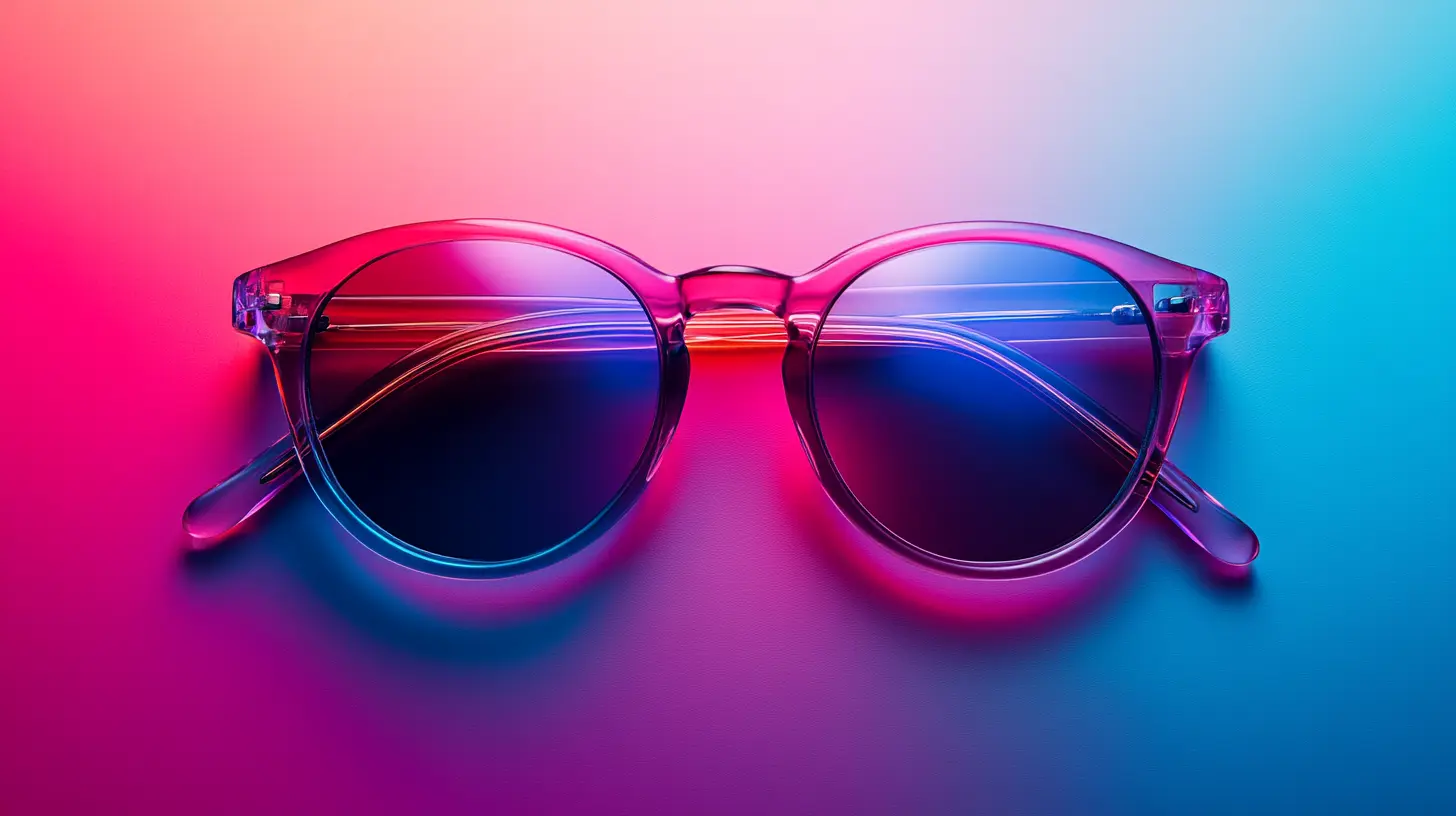The change of the century has done away with the traditional designs of spectacles and made way for new designs and functions. The sunglasses sector was valued at approximately $18 billion in 2022, as per Grand View Research, and trending is the popularity of the non-polarized types which have versatile everyday applications. Conscientious consumers demand eyewear that is stylish but also functional, emphasizing a trend that melds both visual appeal and user performance. Non Polarized Sunglasses provide great benefits for everything from casual use to high-speed sports since they can complement any scenario and activity in so many ways, and form an integral part of most people's wardrobes.
JINRUISHI Optical Glasses Co., Ltd. is located in Jiangsu Province, China, and leads the way in this trend. They manufacture a full mainstream range of lenses, including CR39 sunglasses lenses and photochromic lenses. With an ever-dynamic design, the company believes in addressing the specific needs of its global sourcing partners while providing advanced solutions in lens technology, including blue-light-blocking products. With innovations in Non-Polarized Sunglasses surfacing, it is vital to address the strategic alternatives that sourcing partners have to acquire competitive advantage.

The fashion of eyeglasses is taking sudden turns and has entered a phase, especially in non-polarized sunglasses. Innovative materials are setting the aesthetic and functional scene for new designs, giving scope for creativity. Lightweight, impact-resistant polymers, and sustainable materials emerge to change what people think about sunglasses turning them not only more durable but also eco-friendly. The term with the most innovation is no doubt that of bio-based materials which bring a paradigm shift in this field by reducing the already existing dependency on plastics. Increasingly, brands are bringing materials related to origins of matter such as beans and even recycled ocean plastics. These replacements can garner a new market for consumers who uphold green purchasing in that not only does it lessen the environmental impact by its production processes but also conforms to changing consumer bias. The result is improved lens technology that translates into better visibility and comfort for consumers. Non-polarized lenses, hitherto deemed inferior in glare reduction to the usual polarized lenses, now boast of specialized coating that enhances scratch resistance and UV protection without recourse to polarization. Thus, sunglasses can maintain chic designs while at the same time ensuring that users enjoy a great deal of eye protection when carrying out outdoor activities. These new materials plus technologies keep on discovering fresh terrains for cross-border sourcing partnerships. By advancing in these directions, manufacturers can build modern products with high style, sustainability, and performance standards in terms of non-polarized sunglasses.

With increasing consumer awareness on eye health, one cannot overemphasize UV protection in non-polarized sunglasses. The Vision Council reports that some 75% of adults wear sunglasses, but only a fraction is aware of how vital UV protection is in shielding the eyes from harming rays. Non-polarized sunglasses are famous for versatility and economical price, but these should incorporate adequate filtering of UV rays for total protection against UVA and UVB rays.
According to the Journal of Ophthalmology, several eye problems may arise from excessive exposure to UV rays, including cataracts and macular degeneration. Non-polarized sunglasses with 100% UV protection address these risks while appealing to a broader group of purchasers looking for fashion-driven, practical, everyday eyewear. Sourcing partners in the global arena face the challenge of ensuring that all sunglasses supplied by them conform to strict standards of UV protection laid down, in many cases, by such organizations as the American National Standards Institute (ANSI).
More manufacturers are now using cutting-edge materials and coatings to improve UV protection while not sacrificing the clarity and beauty of nonpolarized lenses. The innovations in lens technology depict the use of enhanced UV-blocking additives in the lens-forming process, accomplishing increased protection while keeping visual comfort at its peak. These trends will better equip sourcing partners to address the demands of a more learned consumer base that prioritizes UV safety in eyewear purchases.

The industry of eyewear is shifting dramatically, especially in the area of nonpolarized sunglasses, which are drastically affecting aesthetic customization. According to a new report from Grand View Research, now more than ever, the eyewear market is expected to reach $196.7 billion by 2027, mostly thanks to the emergence of fashion designs meant to cater to many of consumers' tastes. While professed lovers of fashion are now coming to search for styles reflecting their persona, brands have turned their focus toward customized versatility, enabling consumers to select colors, patterns, and lens shapes that represent their styles.
The whole paradigm of customized production is changing with the advent of technologies such as 3D printing and advanced manufacturing techniques. Brands like Ray-Ban and Oakley are at the forefront of these changes, allowing the consumer to customize sunglasses that meet their desire. According to a survey by McKinsey & Company released in early 2020, nearly 70% of consumers surveyed would pay a premium for personalized products, thus establishing aesthetic customization as a significant driver for these brands to attract a loyal consumer base. This trend facilitates consumer interaction and builds brand loyalty through unique offerings that stand out in a crowded market.
Social media has therefore greatly increased the demand for aesthetically pleasing sunglasses, as influencers and celebrities flood the digital space with photos flaunting their individual styles. In 2021, Statista reported the global sunglasses segment to be worth $29.4 billion and expected to grow at a CAGR of 4.8% from 2022 to 2028 due to new aesthetics. Brands advocating customization will ride this growth trend and strengthen consumer engagement, thus setting new style standards in the eyewear business.

The production practices of sunglasses have been accentuated with this sustainable brand Gitwooth. Gawking at the environmental impact, brands have been utilizing eco-friendly materials and processes. A noticeable wave is the movement from petroleum-based materials to bio-based materials, thereby allowing supplementation of innovation. Market research states that around 89 percent of consumers have been choosing products that can be termed as sustainable intentionally, thereby stressing the necessity for green practices in the eyewear segment.
Danyang in China has slowly turned out to be a change driver and has been named the "Glasses Capital of the World." Analyze the region's investment in automated production lines for efficiency in addition to its role of furthering sustainability in manufacturing. The launch of the International Glasses City saw a display by 900-plus companies featuring advanced technologies for sustainable development, confirming their resolve towards it. This interaction is aimed at addressing the increasing global demand for ecological eyewear by bringing together technology and innovation.
Besides materials, the brands have also improved advanced technology integration into production processes, thereby reducing waste. The trend sits alongside the global sustainability movement, providing a better resonance with the environmentally aware consumers. While processes and innovations continue improving, the remaining years in the future seem bright for sustainable sunglasses making ways for innovations that keep a balance between style and ecological ability.
You may consider it very valid that before companies in the sunglasses sector can contemplate being competitive, it must select the right global partners for sourcing. This decision directly affects product quality and overall operational efficiency. Recent literature suggests that a good sourcing partnership can help cut lead times by as much as 30% and allow prompt responses to market demands. In the case of sunglasses, that implies speedy access to innovative materials such as non-polarized lenses for lightweight comfort, now largely solicited in consumer requests.
Another factor prompting sustainability consideration is consumer awareness. The more consumers are aware of the environmental issue, the more brands are willing to act in unison with suppliers employing eco-friendly methods. Reports show that over 60% of consumers favor sustainable practices among brands. The support of partners who share these values can further build a positive company image while still contributing to a greener world.
Current global dynamics are revealing, particularly with international trade fairs and health cooperatives emphasizing the importance of agility in sourcing strategy. Industries have found their value in collective forces as exemplified by sectors such as clean energy collaborations. The suppliers willing to travel that road will innovate and deliver on bold recycling and carbon-neutral targets inside the sunglasses space.
International trading regulations are becoming complex in the world of sunglasses and cross-border e-commerce with even more complexity being added. As global sourcing partners seek to leverage advantages such as non-polarized sunglasses, it is important to be aware of the nitty-gritty of trade regulations. The modernization of digital means of trade, in particular, cross-border digital currency trade settlement between China and Singapore, has been a landmark step in enhancing transactional efficiency and compliance.
It is vital in this environment for companies to remain alert and flexible to changes in the ensuing trade policies. E-commerce regulations are tightening in places like the EU and the U.S., and companies should begin rethinking their trade plans in ways that maintain compliance while keeping their competitive edge. The Shanghai International Trade "Single Window" offers companies and policymakers a sound international platform for export- and import-related complications, smoothing regulations, and compliance requirements. The focus now shifts toward effortless cross-border trade facilitating companies to optimize their supply chains while mitigating possible regulatory hurdles.
Sun-glassing industry dynamics will continue their metamorphosis, and the resulting binocular view will hold the future for trade regulations. Sourcing partners must now partner with each other for sharing experiences to acclimatize to new paradigms for mutual survival in the global marketplace that is accompanied by enforcements of stringent regulatory environments.
Although the global eyewear market is undergoing continuous expansion, it is particularly non-polarized sunglasses that have begun to find their foothold, especially in the emerging markets. According to a Statista report, the global sunglasses market is expected to reach about $45 billion by 2025, with non-polarized shades accounting for a lion's share of this growth. The affordability and variety in style of non-polarized sunglasses work in favor of emerging economies, where consumers are highly price-sensitive but very fashion-conscious.
Putting in place good marketing strategies will enable these non-polarized sunglasses to penetrate their target markets. Social media platforms have a central role to play, as young consumers in emerging economies are increasingly turning toward online channels for fashion cues. This is where an interesting method-forging a collaboration with local influencers who have the pulse of their target demographics-comes in handy. Nielsen's research indicates that 92% of consumers trust the recommendations of their peers more than traditional advertisements; therefore, joining forces with influencers can effectively build brand awareness and foster engagement.
Marketing programs that reflect local cultural preferences will deepen brand affinity. According to McKinsey, the revenue-growth rate advantage can reach four times for the companies that bend their products to accommodate local tastes versus those that do not. E-commerce should come next on the list to be tapped, as online shopping is gaining momentum very fast in areas such as Southeast Asia, where the digital retail market is expected to cross the $100 billion mark by 2025, spurred by the rise of internet usage and smartphone penetration.
By considering these marketing strategies, brands can effectively promote non-polarized sunglasses in emerging markets that meet consumers' wishes and economic realities.
However, it is vital to create awareness among consumers about the advantages of using non-polarized sunglasses, which, ironically, is one of the topics often neglected on the part of the industry. While polarized lenses have garnered huge popularity, non-polarized sunglasses have their own advantages for the benefit of consumers. Interestingly, almost 60% of consumers do not know the advantages of non-polarized lenses, according to a report by the Vision Council, signifying an area of knowledge that global sourcing partners need to fill.
Non-polarized sunglasses protect from harmful UV rays, and UV protection is vital for preventing long-term sunlight damage to the eye. The association of American optometrists states that UV exposure can develop into cataracts and other ocular conditions. They can also be less expensive, making them a good option for those on a budget. The global eyewear market is expected to touch the mark of USD 157 billion by the year 2025, and the share of non-polarized lenses will grow as the consumer understanding of their specific usefulness increases.
Sourcing partners should improve consumer awareness through some education campaigns targeting consumers. They can disseminate informative material on social media about all the special features and use cases of non-polarized sunglasses. Interactive demonstrations and collaboration with influencers can further bridge the gap so consumers really see the value of these essential eyewear options in their everyday lives. Such awareness will activate demand and build them into market leaders against stiff competition.
UV protection is crucial in non-polarized sunglasses as it safeguards eyes from harmful rays that can lead to conditions like cataracts and macular degeneration.
Approximately 75% of adults use sunglasses, but only a small fraction are aware of the critical role UV protection plays in eye safety.
Prolonged exposure to UV rays can lead to various eye conditions, including cataracts and macular degeneration.
Manufacturers are investing in advanced materials and coatings that improve UV protection while maintaining lens clarity and aesthetics.
Non-polarized sunglasses provide essential UV protection, are often more affordable, and meet specific needs that some consumers may have that polarized lenses do not address.
Implementing targeted educational campaigns, including informative social media content and collaborations with influencers, can help bridge the knowledge gap and highlight the benefits of non-polarized sunglasses.
The global eyewear market is expected to reach USD 157 billion by 2025, with non-polarized lenses anticipated to capture a larger market share as consumers become more informed.
Sourcing partners can align with trends in UV protection by ensuring their products meet rigorous standards and engaging in consumer education to inform buyers about the importance of UV safety.
Consumers may opt for non-polarized sunglasses due to their affordability, essential UV protection, and specific functional purposes that do not require polarization.
Organizations such as the American National Standards Institute (ANSI) regulate rigorous UV protection standards that manufacturers must meet to ensure safety and effectiveness.






